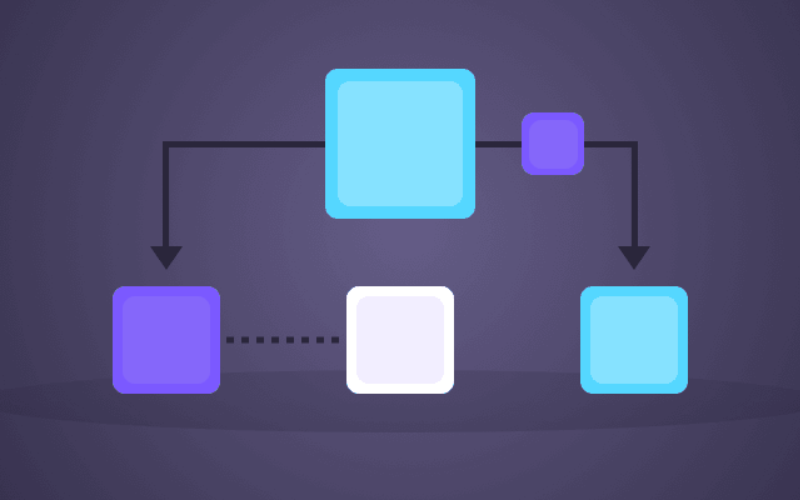User Experience design has
been lucrative, well-liked, and in demand during the past ten years. UX
designer is among the most promising occupations available right now and offers
you a ton of opportunities.
The mere provision of goods
and services by businesses is insufficient given the speed of technological
advancement. They become commodities faster in this digital age.
As a result, user experience
has become becomes crucial, and UX designers with a variety of abilities are
even more vital.
However, you need to have a
variety of UX design skills and talents to break into this sector.

So, what are the must have
skills for UX designers? In this article, we’re going to review top 8 skills every
UX designer must have.
What
are the necessary UX design skills?
A UX designer needs to be an
excellent designer who can produce excellent user experiences.
For designers who are eager
to expand their skill sets and are confident in their ability to manage
challenging B2B projects, the market offers a sea of opportunities.
▶️ Related: How to become a UI/UX designer?
Research
The difference between a bad
and a good user experience can be determined by good research, which is the
cornerstone of effective design.
In fact, conducting user
research early in the design process could save you time and money.
The market and the
competition must be researched by UX designers. A quality market analysis will
look into the direct rivals with similar value propositions.
user research aids UX
designers in understanding user behavior, objectives, and motivations. All of
this aids in locating market prospects for the product in a certain region.
Additionally, the
information gathered is both quantitative and qualitative, which is then
combined to produce insights. These observations are used to inform design
decisions at various phases of the design thinking process.
User research is one of the
important must have skills for UX designers which helps identifying user
requirements and developing empathy.
Therefore, if you want to be
considered as a good UX designer, improve your UX research abilities.
Wireframing
and prototyping
Wireframing and prototyping
are a must have skill for UX designers. A good UX design puts the user first. User
feedback is a major driving force behind a user-focused design from the very
beginning of product development.
The most effective method of
obtaining useful user feedback and identifying faults early on is through UX
design skills; namely, wireframing and prototyping.
A prototype is a functional
version of an app or website, whereas a wireframe is a static depiction or
blueprint of the original product concept.
In other words, wireframing
and prototyping aid in determining whether or not a design can be implemented.
At the heart of the UX
design field are the disciplines of wireframing and prototyping. You probably
won't find a UX position that doesn't need proficiency in this area.
The greatest approach to
test your designs, uncover flaws, or find ways to enhance your product before
it is finalized is through wireframes and prototypes.
Information
architecture
On our list of necessary
skills for UX designers, information architecture has the third place.
More than just making a
design appealing is involved in UX design. The goal of UX designers is to
create products that are enjoyable and comfortable for the user to use.
UX designers integrate and
structure the numerous visual, interface, and navigational aspects logically in
order to create a seamless user experience; this process is known as developing
the information architecture which is one of the important UX design skills.

The main goal of information
architecture is to arrange content such that users can quickly grasp how a
product works and locate everything they require. Knowing, for instance,
whether visitors anticipate finding a certain piece of information by clicking
a button or by just scrolling down.
UX designers must comprehend
how the tiny parts work together to form the bigger image in order to do this.
They also need to understand how components of the system interact with one
another while keeping the user's objectives in mind.
A successful information
architecture (IA) is the cornerstone of an effective user experience, so it’s
among the necessary UX design skills.
UX
writing
UX writing abilities are must
have skills for UX designers because they can assist them in employing
microscopes to improve UX design.
What we hear or read while
utilizing a digital product is referred to as microcopy. Microcopy is a crucial
component utilized in website navigation.
UX writing is a potent
strategy for engrossing your readers and improving user engagement. It may be
used to write microcopies, headings, and subheadings, as well as to label the
various UI elements such as buttons and menu bars.
In actuality, UX authoring
aims to increase your users' understanding of your product by speaking to their
mental models. Additionally, writing is becoming an ever-larger part of user
experience, and many businesses are hiring professionals solely for this
purpose.
Visual
communication skills
UX places a lot of
importance on visual design which involves much more than just a website's
appearance and feel.
Reduced reliance on written
instructions is the key objective of effective visual communication. Users
ought to be able to navigate and get whatever they need solely by using visual
cues.
UX designers should learn
effective visual communication techniques. Making things appear interactive,
creating a strong visual hierarchy, utilizing font and color theory, and
minimizing the necessity for textual instructions are all must have skills for
UX designers.
Critical
Thinking
In addition to technical UX
design skills, UX designers need to possess specific "soft skills,"
or aptitudes that may be used in a variety of work environments.
One of the vital soft skills
for UX designers is critical thinking which is a technique for examining ideas,
concepts, or data in order to consider a problem from various angles and then
come up with an objective answer.
Critical thinking encourages
collaborative brainstorming and task completion and is all about challenging
presumptions and drawing conclusions from them to support a theory, procedure,
or solution.
As a UX designer, you have
to set project objectives and schedules as well as manage expectations, resolve
issues, and work together with a team. Your ability to think critically will help
you carry out these tasks with ease.
In any career, critical
thinking is unquestionably the most desirable quality, but in the realm of user
experience it is a must have skill for UX designers.
Communication
skills
The ability to communicate
effectively is one of the other necessary skills for UX designers.
The majority of a UX
designer's time is spent on laborious duties like leading design workshops
alongside team members and stakeholders, giving presentations on the results
and design solutions, running user tests, and so forth.

UX designers must be able to
communicate their ideas clearly, precisely, and succinctly in order to
accomplish all of this. Therefore, having strong verbal and written
communication abilities may really set a UX designer apart.
Additionally, in challenging
circumstances, you can gain buy-in from stakeholders merely by being able to
interact with others.
A UX designer frequently
serves as a mediator in design workshops. The act of leading a workshop is
challenging since participants must manage disagreements that occasionally
develop when discussing potential products.
Strong communication
abilities are needed to manage this stress. So, make sure to improve these UX
design skills to gain competitive advantage.
Decision-Making
UX designers must frequently
consider how to reach the best decisions possible while working on projects. In
fact, in order to deal with the complicated problems, excellent decision-making
abilities are must have skills for UX designers.
UX designers base their work
on a number of primary problem statements which are based on the requirements
of their users throughout the design process. They also iterate, test
prototypes, receive feedback from the intended audience, and refine their
concepts.
All decisions require
careful thought, including how to distribute resources, how to select a problem
statement carefully, how to select the design solution to be evaluated, and how
to implement it.
UX designers may use their
strong decision-making abilities to improve entire design processes with
insightful data, rather than settling on a gut-based solution.
Conclusion
Undoubtedly, the importance
of UX is growing and will continue to do so as time goes on. The purpose of a
User experience is to increase customer happiness and loyalty by making a
product easy to use and enjoyable to use.
A job in UX design can be
gratifying and demanding, and it is definitely attainable with learning the
appropriate UX design skills.
UX designers frequently
possess proficiency in a broad range of fields that support their line of work
in addition to having highly developed and applied industrial abilities.
While UX designers must have
a thorough understanding of the full UX design process, they also need business
and soft skills like curiosity, empathy and, most crucially, the ability to
work well with others.
As the demand for
professionals in the digital industry rises, placing priority on gaining must
have skills for UX designers will aid you in standing out to potential
employers as well as improve your proficiency as a designer.
Finding a skilled UX
designer takes time. You should choose your UX designers carefully because they
will be in charge of ensuring that users are satisfied with your upcoming
product.
Our designers have the right
set of UX design skills to help you succeed. So, don’t hesitate to contact us!